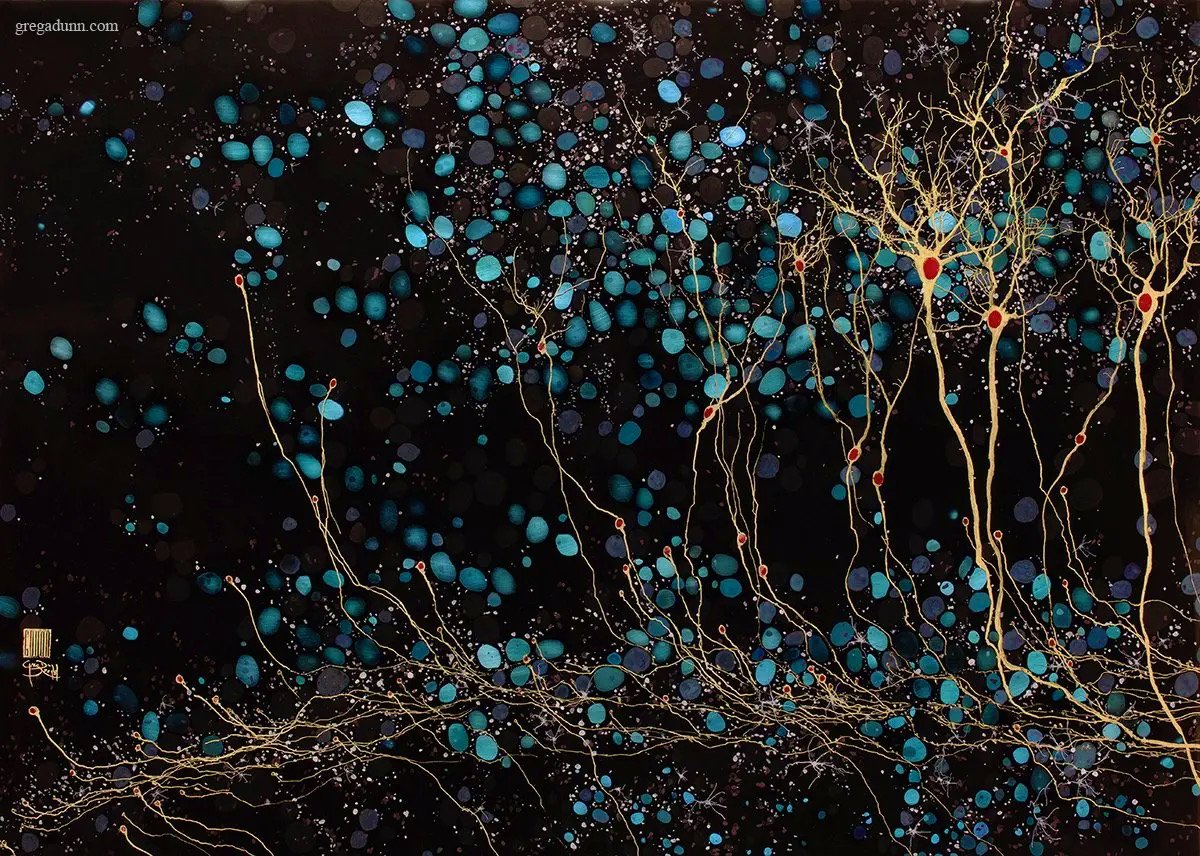Could mastering Dopamine Control lead to neurogenesis in extreme environments as opposed to neurodegeneration?
Can personalized countermeasures mitigate potential negative variables within extreme environments?
Reinforcing our neural pathways over time through repeated exposure therapy would strengthen our own dopamine control, which could make space for wise-mind decisions through self-mastery. Thus, desensitizing our brain from the things which cause a negative neurophysiological response to stressful stimuli (Boling, 2021).
These physiological emotional-regulation tools will carry over into the everyday life of the practitioner by providing a renewed self-awareness, and the ability to maintain homeostasis, even in the direst of circumstances (Boling, 2021).
The Psychological Field Kit.
Psychological Field Kits will facilitate guidelines for the individual, as this is not a one-size-fits-all approach (Boling, 2021).
The working model goals are:
Establishing a true baseline through cessation and elimination of specific dietary and behavioral/environmental factors are a requirement.
Once a baseline is established, the practitioner can build up their own personal kit through re-incorporating healthy self-care techniques, diet, and supplementing with vitamins and amino acids; mycology; recreation; meditation and breathwork; environmental aesthetics; music and art therapy; yoga and movement.
The goal is to revolutionize your working model of countermeasures to mitigate symptoms brought on by exposure to the extreme environment. Variables that play a role in negative exposure to an extreme environment are brain inflammation; dietary deficiencies; fibromyalgia/autoimmune responses; brain degeneration; sleep impairment; and behavioral responses.
Treatment of inflammation-related behavioral symptoms that contribute to an inflammatory malaise.
Research the mechanisms by which cytokines alter the basal ganglia and dopamine function.
Mitigation of cytokine-induced behavioral changes and malaise due to an inflammatory response from HPA-axis-dysfunction.
Here are 10 evidence-backed reasons for finding time to consciously breathe during your day (10 Evidence-Backed Reason to Find Time to Breathe - Yoga Ed., 2016).
1. Improves respiratory rate and capacity.
2. Increases aerobic capacity.
3. Lowers blood pressure and heart rate.
4. Helps you relax.
5. Combats stress.
6. Combats anxiety.
7. May strengthen the prefrontal cortex.
8. Directs your awareness, attention, and motivation.
9. Increases readiness to learn.
10. Builds self-regulation and life skills.
Utilization of this working model with regard to dopamine control; once baseline is established, there are a very specific set of measurements that would fine-tune one’s own psychological field kit.
Presently, there are no tests to accurately measure dopamine. Monitoring over time is the most accurate method of measurement to date.
The key is to detox the toxins from the practitioner; establish a baseline; and build from there.
Beginning fresh with the guidance of the dopamine control recipe in your own psychological field kit you will start the journey of self-mastery of your own homeostasis.
Thus, the psychological field kit provides countermeasures for your ability to thrive (not survive) under circumstances of high-stress in extreme environments.
“The cruise phase begins after the spacecraft separates from the rocket, soon after launch. The spacecraft departs Earth at a speed of about 24,600 mph (about 39,600 kph). The trip to Mars will take about seven months and about 300 million miles (480 million kilometers). During the cruise phase, engineers have five opportunities (plus one backup maneuver and one contingency maneuver) to adjust the flight path. During these trajectory correction maneuvers, engineers will calculate the spacecraft’s location and command eight thrusters on the cruise stage to fire for a specific amount of time needed to tweak the path. The maneuvers are very important because years of careful planning leads to the selection of the landing site on Mars, and fine-tuning the flight path ensures that the spacecraft will enter the Mars atmosphere at just the right spot to land. The final 45 days leading up to the landing make up the approach phase. This phase primarily involves navigation activities and getting the spacecraft ready for Entry, Descent and Landing. This is when the final three trajectory correction maneuvers may be performed, if needed” (mars.nasa.gov, 2020).
This would be a perfect example of a scenario where Dopamine Control would be necessary.
References:
Boling, Melanie. (2021). Melanie Noelani Boling. Imagery Beyond Borders. https://imagerybeyondborders.org
Boling, Melanie (2021). Reported results of Amazonian Entheogens for treatment of Complex-Post-Traumatic Stress Disorder (C-PTSD); Military Sexual Trauma (MST); and Traumatic Brain Injury (TBI) among U.S. Military Veterans and the benefits of application through small group indigenous shamanic ceremonies. The Amazon Rainforest: From Conservation to Climate Change-research. Harvard Summer School, August 9, 2021.
Castelli, V., Cimini, A., & Ferri, C. (2020). Cytokine Storm in COVID-19: “When You Come Out of the Storm, You Won’t Be the Same Person Who Walked in.” Frontiers in Immunology, 11, 2132. https://doi.org/10.3389/fimmu.2020.02132
Cools, R., & Roberts, A. C. (2004). The Role of Dopamine in Cognition: Insights from Neuropsychological Studies in Humans and Non-Human Primates. In S. Otani (Ed.), Prefrontal Cortex: From Synaptic Plasticity to Cognition (pp. 219–243). Springer US. https://doi.org/10.1007/1-4020-7949-4_10
Dopamine Pathways. (2013). Okinawa Institute of Science and Technology Graduate University OIST. Retrieved December 2, 2021, from https://www.oist.jp/news-center/photos/dopamine-pathways
Felger, J. C., & Miller, A. H. (2012). Cytokine effects on the basal ganglia and dopamine function: The subcortical source of inflammatory malaise. Frontiers in Neuroendocrinology, 33(3), 315—327. https://doi.org/10.1016/j.yfrne.2012.09.003
Felger, J. C. (2017). The Role of Dopamine in Inflammation-Associated Depression: Mechanisms and Therapeutic Implications. Current Topics in Behavioral Neurosciences, 31, 199–219. https://doi.org/10.1007/7854_2016_13
Foo, C., Lozada, A., Aljadeff, J., Li, Y., Wang, J. W., Slesinger, P. A., & Kleinfeld, D. (2021). Reinforcement learning links spontaneous cortical dopamine impulses to reward. Current Biology, 31(18), 4111-4119.e4. https://doi.org/10.1016/j.cub.2021.06.069
Frontiers | How Breath-Control Can Change Your Life: A Systematic Review on Psycho-Physiological Correlates of Slow Breathing | Human Neuroscience. (n.d.). Retrieved December 14, 2021, from https://www.frontiersin.org/articles/10.3389/fnhum.2018.00353/full
Garofalo, S., & di Pellegrino, G. (2015). Individual differences in the influence of task-irrelevant Pavlovian cues on human behavior. Frontiers in Behavioral Neuroscience, 9, 163. https://doi.org/10.3389/fnbeh.2015.00163
GREG DUNN NEURO ART- Brain and Neuroscience Fine Art Paintings. (n.d.). GREG DUNN NEURO ART. Retrieved December 15, 2021, from https://www.gregadunn.com/
Keltikangas-Järvinen, L., & Salo, J. (2009). Dopamine and serotonin systems modify environmental effects on human behavior: A review. Scandinavian Journal of Psychology, 50(6), 574–582. https://doi.org/10.1111/j.1467-9450.2009.00785
Lieberman, D., & Long, M. (2018). The Molecule of More: How a Single Chemical in Your Brain Drives Love, Sex, and Creativity--and Will Determine the Fate of the Human Race. Faculty Bookshelf. https://hsrc.himmelfarb.gwu.edu/books/249
mars.nasa.gov. (n.d.). Trip to Mars. Retrieved January 17, 2022, from https://mars.nasa.gov/mars2020/timeline/cruise/
MIND Foundation. (2019, December 22). Ayahuasca’s afterglow: Improved mindfulness & cognitive flexibility | Ashleigh Murphy-Beiner. https://www.youtube.com/watch?v=WADjcFNbhrg
Murphy-Beiner, A, and K Soar. “Ayahuasca’s ‘Afterglow’: Improved Mindfulness and Cognitive Flexibility in Ayahuasca Drinkers.” Psychopharmacology 237, no. 4 (April 2020): 1161–69.https://doi.org/10.1007/s00213-019-05445-3.
Peter, A. E., Sandeep, B. V., Rao, B. G., & Kalpana, V. L. (2021). Calming the Storm: Natural Immunosuppressants as Adjuvants to Target the Cytokine Storm in COVID-19. Frontiers in Pharmacology, 11, 2305. https://doi.org/10.3389/fphar.2020.583777
Plotkin, M. J. (2021). The Amazon: What everyone needs to know. Chapter 8 seminar. Lecture notes The Amazon Rainforest: From Conservation to Climate Change- seminar. Harvard Summer School. Delivered 3 August 2021.
Speaking of Psychology: The molecule of more—Dopamine. (n.d.). Retrieved December 14, 2021, from https://www.apa.org/research/action/speaking-of-psychology/dopamine
Spiny Neurons Receive Dopamine. (n.d.). Okinawa Institute of Science and Technology Graduate University OIST. Retrieved December 2, 2021, from https://www.oist.jp/news-center/photos/spiny-neurons-receive-dopamine
Substantia nigra. (2021). In Wikipedia. https://en.wikipedia.org/w/index.php?title=Substantia_nigra&oldid=1045490165
Sudevan, S., Muto, K., Higashitani, N., Hashizume, T., Higashibata, A., Ellwood, R. A., Deane, C. S., Rahman, M., Vanapalli, S. A., Etheridge, T., Szewczyk, N. J., & Higashitani, A. (2021). Loss of Contact in Space Alters Dopamine System in C. elegans (SSRN Scholarly Paper ID 3919931). Social Science Research Network. https://doi.org/10.2139/ssrn.3919931
Tang, L., Yin, Z., Hu, Y., & Mei, H. (2020). Controlling Cytokine Storm Is Vital in COVID-19. Frontiers in Immunology, 11, 3158. https://doi.org/10.3389/fimmu.2020.570993
Toenders, Y. J., Laskaris, L., Davey, C. G., Berk, M., Milaneschi, Y., Lamers, F., Penninx, B. W. J. H., & Schmaal, L. (2021). Inflammation and depression in young people: A systematic review and proposed inflammatory pathways. Molecular Psychiatry, 1–13. https://doi.org/10.1038/s41380-021-01306-8
10 Evidence-Backed Reason to Find Time to Breathe—Yoga Ed. (n.d.). Retrieved January 17, 2022, from https://yogaed.com/resources/10-evidence-reasons-time-breathe/
About the author:
Melanie began attending Harvard in 2020 to complete a Graduate Certificate in Human Behavior with a specialization in Neuropsychology. Boling’s research has examined extreme environments and how they can have a potential negative impact on humans operating in the extreme environment. During her time at Harvard, she has built a mental wellness tool called a psychological field kit. Implementing these tools will allow an individual to thrive in an extreme environment while mitigating negative variables such as abnormal human behavior which can play a role in team degradation.
Melanie Boling, Extreme (ICE) Environments Neuroscientist, Boling Expeditionary Research Group; and Neuropsychology Graduate Student, Harvard University.






